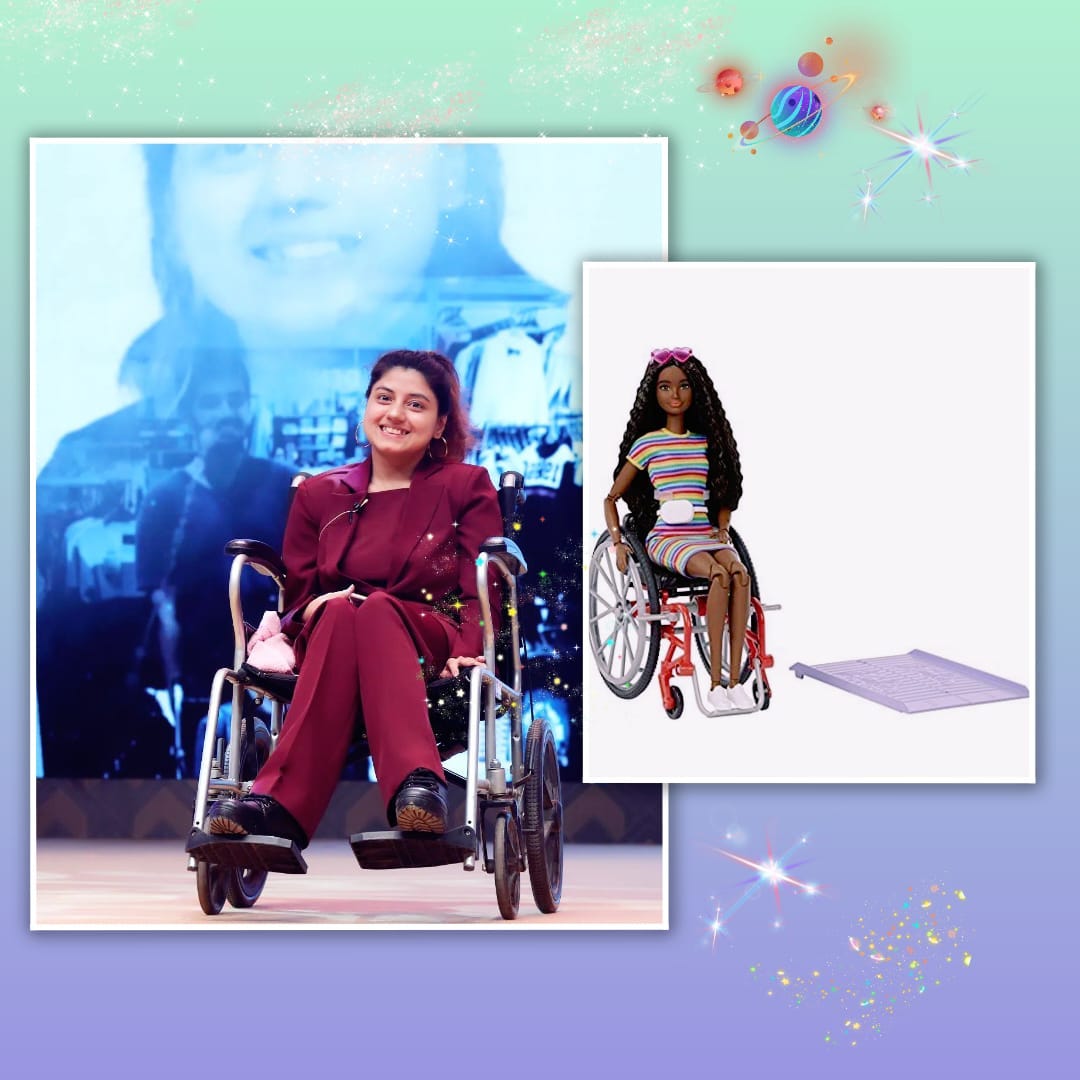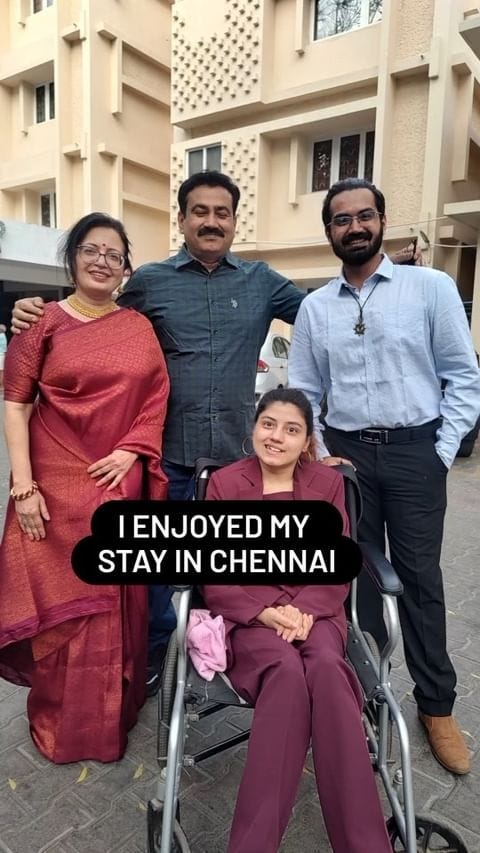Breaking barriers with Barbie
Wheelchair user Vinayana feels unstoppable with wheelchair Barbie by her side.

As a child, I remember my Barbie transporting me to a grown-up world of possibilities. My cousins loved Barbie, too, and uncle Lulu, their dad, built a wooden house, where their Barbies found a home. Together, we framed our unique tales of connection, and lived out our fantasies through our doll universe.
More recently, I came across another unique tale of connection, while scrolling through my Insta feed. Vinayana Khurana, a 20-something writer living with cerebral palsy was celebrating wheelchair Barbie, a chic-looking doll in a wheelchair.
Her post got me wondering how children with disabilities related to dolls with non-disabled bodies.
How do you craft stories when your doll looks very different from you?
Does it feel, perhaps, like you are living out someone else’s fantasy?
You are the director, and the creator of this story. But the story isn’t about you.
So, I reached out to Vinayana to get her take.
She shares, “Growing up, I was a huge fan of Barbie dolls. However, I often felt a disconnect with them. I loved playing with them. But there was always a part of me that couldn’t fully identify, because they were portrayed as perfect in every way. They didn't reflect the realities of someone like me, living with cerebral palsy. This made it challenging at times to see myself in the stories and adventures I created with these toys.”
The recent launch of wheelchair Barbie and other inclusive dolls such as deaf Barbie (who comes with a hearing aid) has ignited a child-like excitement in Vinayana, now in the prime of adulthood.
“The introduction of more inclusive dolls, like Wheelchair Barbie, is so meaningful to me — it represents a shift towards a more realistic, inclusive portrayal of beauty and diversity in toys. This collection makes me feel seen and valued. “
- Vinayana Khurana, wheelchair user, writer, poet & disability advocate
Powerful words!
Building a Voice
Like wheelchair Barbie, Vinayana also gets around on a wheelchair, and she is as glam as her Barbie counterpart. She has many aspirations, and recently managed to complete her thesis dissertation.
Over the years she has also become a strong voice, harnessing her 43K follower-strong Instagram page to advocate for accessibility for people with disabilities.
I observe that some of the videos simply normalise the life, dreams and aspirations of a young woman with a disability. I especially enjoyed this reel of Vinayana’s friend Somya colouring her hair.
I’ve also observed Vinayana talking about many issues close to her heart on her timeline - depression, love and relationships, jobs and employability, fashion, and access. In this video, she chronicles her travels to Chennai, which she observed to be a highly accessible city.
Her advocacy helps her build awareness, connection and conversations, using humour, real-life experiences, and other creative tools like poetry. Here are some powerful verses by her:
Being Different
I was a little girl, when I realized,
I was different from others,
Not because I had a disability,
But because I loved to challenge,
When people said, you cannot walk,
I used a walker,
I used supporters, when people said,
You can not cycle,
When people said, I can't talk properly,
I wrote poetry,
When people thought, how would I write with a pen?
I typed,
When people said, how would I get educated?
I completed my Master's,
When people said, I shouldn't move out,
I used a Motorized Wheelchair,
When people said, how would I earn?
I got a freelance job,
I did everything, what people thought,
I couldn't,
Because they thought, I was different,
And being different, isn't always bad,
Sometimes, being different,
Brings a whole new perspective, towards life...
When Tech is Your Friend
Vinayana has improved her life extensively by using technology inventions pioneered by various brands. A few that stand out to her include:
Apple, which excels at accessibility features like VoiceOver and AssistiveTouch on the iPhone, making tech accessible
Instagram, which has made progress with features like image descriptions
Fashion brand Tommy Hilfiger has impressed her with their adaptive clothing lines, making fashion accessible to all
Mobility brand Permobil stands out for offering customisable, advanced wheelchairs that prioritise comfort and mobility.
“My favourite brands are those that actively collaborate with the disability community to ensure inclusivity in their products, ” observes Vinayana.
Rounding up, she has some great advice for toy-makers: create accessible playsets that allow all dolls to participate equally; collab with disability communities to ensure authentic representation, and expand storytelling through books and media to normalise disability.
As of 2023, India had over 431 million children, of which 1.24% have a disability - by no means a small number.
Here's my take:
Representation matters, especially, with dolls, which are tools to unleash our creativity, imagination, aspiration. I am glad Barbie has evolved over the years, pushing the boundaries of disability, gender, and sexuality.
I’d love to see a deaf Barbie who is an entrepreneur or designer, or dyslexic Barbie who becomes an artist or an inventor. The storylines and possibilities are endless.
Hopefully, toy-makers will consider bringing out more inclusive collections as part of their business strategy.
I’ll end by sharing a video I made with Vinayana in 2016, during my time as a campaigns editor at Youth Ki Awaaz. The aim of the video was to demonstrate how people with disabilities experience life differently due to lack of access.
Here’s a quick gist of the video - we sent Vinayana off to Khan Market, an upmarket neighbourhood in Delhi on a coffee date. Here’s how she fared…!





